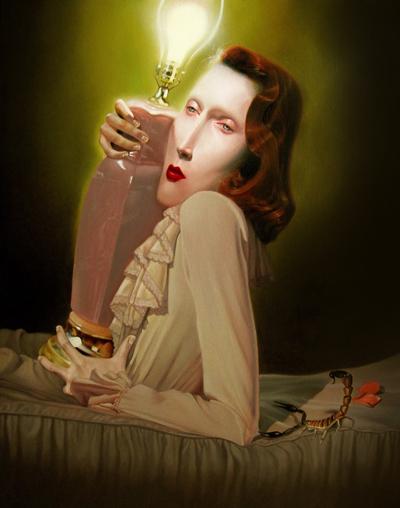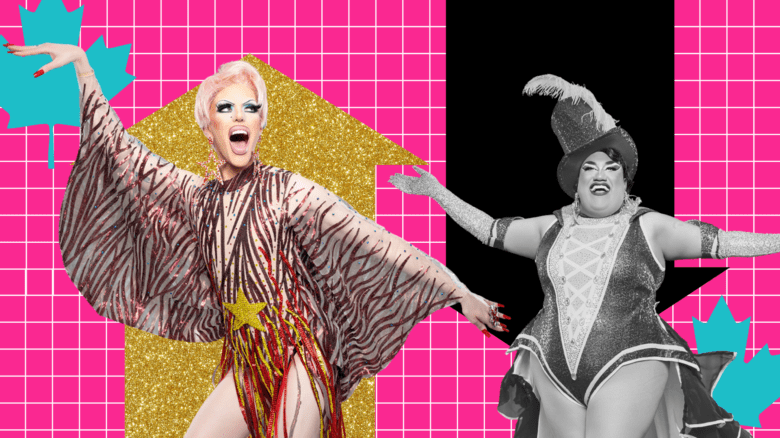
Arrival of the Bee Box, by Troy Brooks.
“I have always loved loud women,” says painter Troy Brooks, “women who are authoritative, dynamic, bold, not a product of their time.”
So when Brooks happened to stumble onto an online documentary about the famously defiant author Sylvia Plath, he knew he had found the muse for his next project. After spending his summer holed up in a Hickory Grove cabin in southern Ontario, he emerged with his series Colossus, which will open at Toronto’s Pentimento Gallery on Oct 27 and run until Nov 27.
“I think a lot of gay men feel the way I do about loud women,” he continues. “When you spend part of your life repressing a big part of you, or your feminine side, you take pleasure in watching a woman act out.”
And Plath is, in many ways, this kind of rogue. Her oeuvre, especially her well-known novel The Bell Jar, painfully unwraps the rigid social norms for women of her era and the severe damage that results from them. Having taken her own life at 30, Plath’s legacy is a dark one, marked by anger, depression and a struggle against chauvinism. She has been taken up posthumously as something of an icon for feminists and smart women everywhere.
“[Plath’s] was a time when women were encouraged to be demure and uncomplicated, and she was the antithesis of that. She was dark, she was brooding, she was ambitious,” Brooks explains. “With this particular series, I was interested in the idea of a woman who is much bigger than her surroundings, much bigger than the definitions imposed on her.”
Like Plath, the women depicted in the series do seem to have a sort of eerie magnetism. Long and pale faces with crimson lips look outward from simple, but often bizarre, surroundings. In Lady Lazarus, a vampy redhead stares emptily into space as she tightly grips a ceramic lamp to her cheek, oblivious, or perhaps indifferent, to the scorpion just behind her elbow. In Arrival of the Bee Box, a calm blonde looms upright in a generic bedroom and glares knowingly at the viewer through a veil covered in bees.
Although such spectral characters are primarily inspired by Plath’s work (each painting’s title is taken from different Plath poems), Brooks does not intend them to be definitive portraits of Plath or her work.
“I had my peripheral knowledge about Sylvia Plath, but I didn’t want them to be manifestations of her and the poems,” he emphasizes. “I had my own impression of her and I built from that.”
The paintings, thus, serve as a sort of translation of, even departure from, the texts they reference — projecting them onto a surreal yet strangely familiar time and space. Some of them contain imagery directly related to a single poem: Plath enthusiasts will immediately recognize the black shoe and telephone poles in Daddy. But others create whole new sets of symbols and stories. All of them invite interpretation from the audience regardless of their familiarity with Plath’s work.
“I’m really only painting her archetypes,” Brooks explains. “I used pieces of her to make my own characters.”

 Why you can trust Xtra
Why you can trust Xtra


